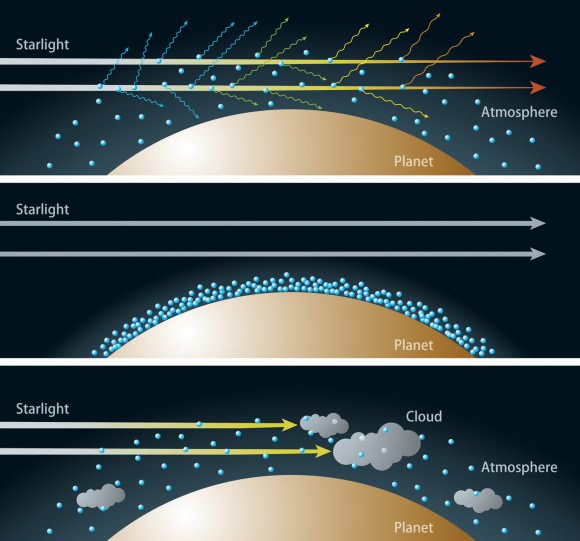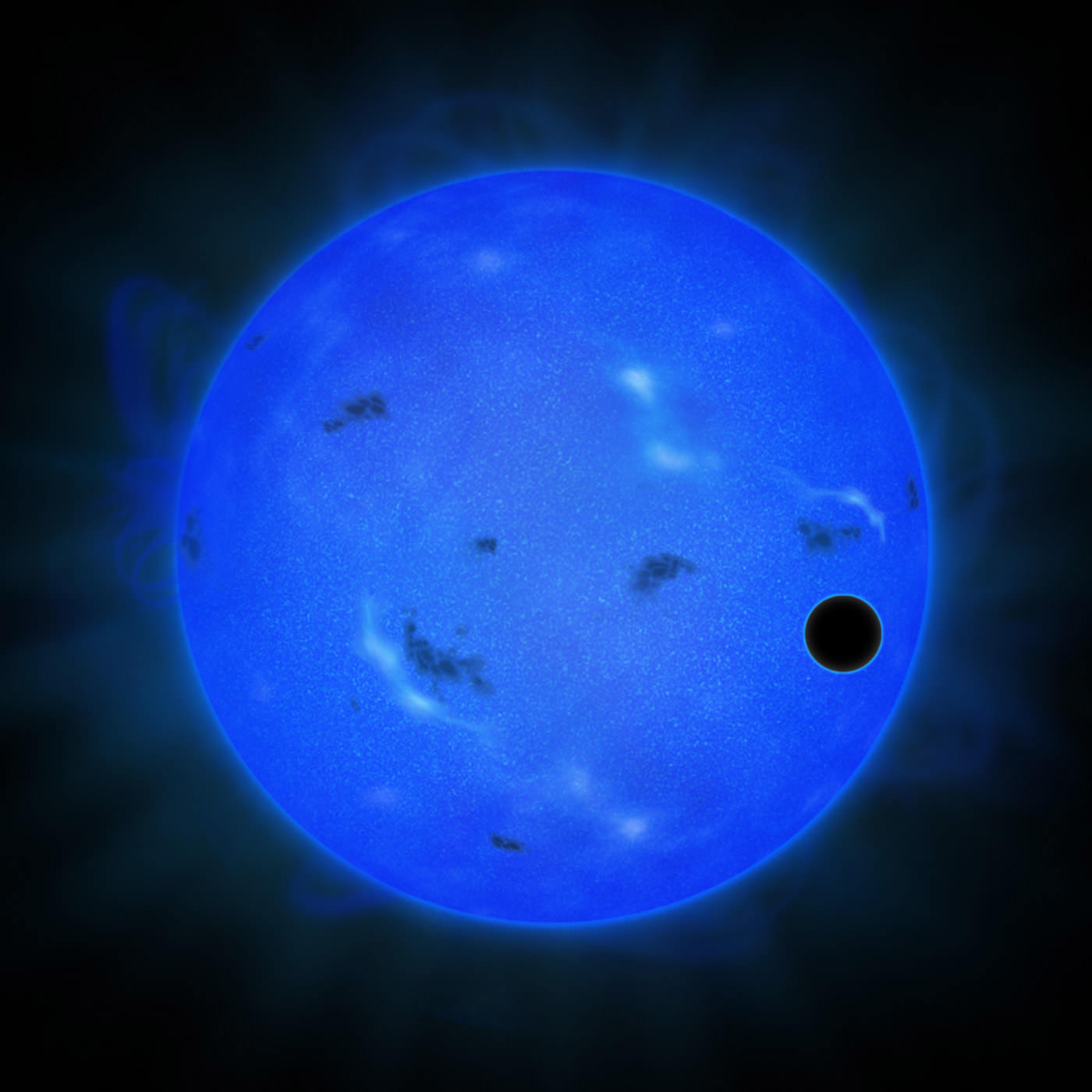Playing with the filters on a telescope can show us amazing things. In a recent case, Japanese astronomers looked at the star Gilese 1214 in blue light and watched its “super-Earth” planet (Gliese 1214 b, or GJ 1214 b) passing across the surface from the viewpoint of Earth. The result — a probable detection of water in the planet’s atmosphere.
Observations with the Subaru Telescope using a blue filter revealed the atmosphere does not preferentially scatter any light. If the Rayleigh scattering had been observed, this would have shown hydrogen in the atmosphere, researchers said. (On Earth, Rayleigh scattering of the atmosphere makes the sky blue.)
“When combined with the findings of previous observations in other colors, this new observational result implies that GJ 1214 b is likely to have a water-rich atmosphere,” stated the National Astronomical Observatory of Japan.
This finding confirms work performed in 2010 (where scientists concluded the planet was mainly made of water) and adds on to information in 2012, where infrared measurements with the Hubble Space Telescope revealed a possible steamy waterworld under a thick atmosphere.
The planet is an ideal candidate for exoplanet observations because it is relatively close to Earth (40 light years away) and is about 2.7 times the size of our planet, allowing for possible comparisons between the worlds.

Credit: NAOJ
There’s still some debate over whether “super-Earths” are closer in nature to Earth or to Uranus or Neptune (each about four times Earth’s diameter), requiring scientists to scrutinize that class of exoplanets to learn more about their properties.
One area under investigation is where the super-Earths form. It is believed that planets arise out of a protoplanetary disk, or cloud of gas, ice and debris that surrounds a young star at the beginning of its life. Hydrogen is a big part of this disk, as well as water ice beyond the “snow line“, or the region in a planetary system where waning heat makes it possible for ice to form.
“Findings about where super-Earths have formed and how they have migrated to their current orbits point to the prediction that hydrogen or water vapor is a major atmospheric component of a super-Earth,” NAOJ stated. “If scientists can determine the major atmospheric component of a super-Earth, they can then infer the planet’s birthplace and formation history.”
The team acknowledges it’s still possible there is hydrogen in GJ 1214 b’s atmosphere, but add their findings do corroborate with past ones suggesting water.
Source: NAOJ


I figure there are rocky planets with very thick atmospheres. Something of a hybrid between rocky planets and gas giants.
What would the fishing be like on such a world.